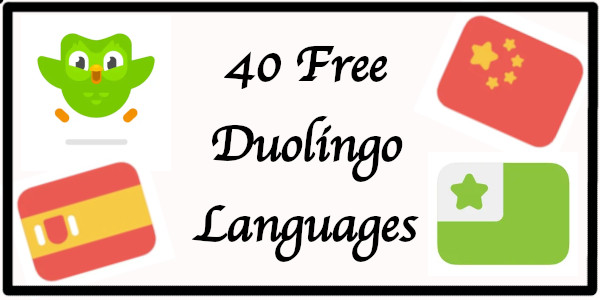
Many people ask, what languages can you learn on Duolingo?
As of May 2024, Duolingo Languages offers a rich assortment of 39 courses for English speakers to learn French or any other language like Esperanto, High Valyrian, and even Klingon.
You’re also able to learn Catalan if you’re a Spanish speaker, and if you’re looking to learn American English, you have 25 different languages to choose from as a starting point.
This extensive array of options ensures that individuals from varied backgrounds and with diverse interests will find the perfect course to learn a language with duolingo.
What are the top 3 languages in Duolingo?
Top 3 Languages By Number of Learners:
- (American) English – 46.7 million Spanish learners (+ more in other languages)
- Spanish – 39.3 million English speaking learners
- French – 23.3 million English speaking learners
Top 3 Languages by Number of Words Taught:
The most comprehensive language courses are those taught from English. Of these, the top three are Spanish, French and German.
What Languages Does Duolingo Have?
For English speakers, here is a complete list of languages available on Duolingo:
- Arabic (Modern Standard)
- Chinese (Mandarin)
- Czech
- Danish
- Dutch
- Esperanto
- Finnish
- French
- German
- Greek
- Haitian Creole
- Hawaiian
- Hebrew
- High Valyrian
- Hindi
- Hungarian
- Indonesian
- Irish
- Italian
- Japanese
- Klingon
- Korean
- Latin
- Navajo
- Norwegian (Bokmål)
- Polish
- Portuguese (Brazilian)
- Romanian
- Russian
- Scottish Gaelic
- Spanish
- Swahili
- Swedish
- Turkish
- Ukrainian
- Vietnamese
- Welsh
- Yiddish
- Zulu
Catalan is also available, for Spanish speakers only.

Curious about how far Duolingo can take
your language skills?
Discover the specific CEFR levels you can achieve with each Duolingo course in our latest blog post. Dive in now to map out your language learning journey and set your goals! Read More
Duolingo Fictional Languages
You can learn the fictional languages (or conlangs) of Klingon, and High Valyrian with Duolingo.
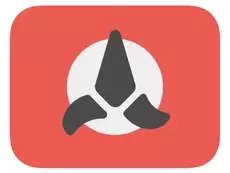
Klingon is the fantasy language first created for Star Trek in 1967 by G. L. Coon, and later further developed by Marc Okrand. It has entered popular culture over the past half century such that even classics like Shakespeare and parts of the Bible have been translated into the language. It is thought to have the largest population of speakers of any fictional language.
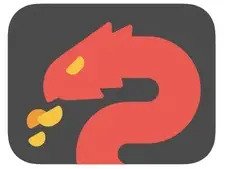
The concept of High Valyrian is the creation of George R. R. Martin, author of the fantasy novel series ‘A Song of Ice and Fire’, which most people know better from the TV adaptation ‘Game of Thrones’. In the series, both High Valyrian and Dothraki were developed by David J. Peterson, and he continues their development.
The Klingon course on Duolingo only goes to A1 and High Valyrian is just an introduction.
Other Duolingo Conlangs
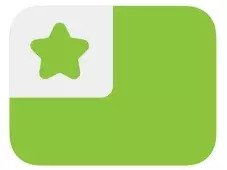
You can also learn Esperanto with Duolingo.
Esperanto is not strictly a ‘fictional language’ in that it wasn’t created for a fictional book or televisions series, but it IS a conlang – a constructed language. That is, it was developed by an individual, L. L. Zamenhof, a Yiddish Russian man (born in today’s Poland), in 1887.
Created to be a global language in the hope of eliminating wars and conflict, it is thought that there are today around one thousand native level speakers, and hundreds of thousands who use it actively to some level of competance. It is the only conlang to have achieved this level of international acceptance, and it is notable that it is a language available on Google Translate.
The Duolingo Esperanto course will take you to around an A2 level.
Learning From Other Languages
Presently it is possible to learn at least one language with Duolingo from any of the following languages:
- Arabic
- Bengali
- Chinese Mandarin
- Czech
- Dutch
- French
- German,
- Greek
- Hindi
- Hungarian
- Indonesian
- Italian
- Japanese
- Korean
- Polish
- Portuguese
- Romanian
- Russian
- Spanish
- Tagalog
- Telugu
- Thai
- Turkish
- Ukrainian,
- Vietnamese
Language Learning Matrix: Source to Target Languages
Learn From: | YUE1 | CA | ZH2 | EN | FR | DE | IT | JA | KO | PT | RU | ES | SV3 |
| Arabic | ✔️ | ✔️ | ✔️ | ✔️ | |||||||||
| Bengali | ✔️ | ||||||||||||
| Chinese | ✔️ | ✔️ | ✔️ | ✔️ | ✔️ | ✔️ | ✔️ | ||||||
| Czech | ✔️ | ||||||||||||
| Dutch | ✔️ | ✔️ | ✔️ | ||||||||||
| French | ✔️ | ✔️ | ✔️ | ✔️ | ✔️ | ||||||||
| German | ✔️ | ✔️ | ✔️ | ✔️ | |||||||||
| Greek | ✔️ | ||||||||||||
| Hindi | ✔️ | ||||||||||||
| Hungarian | ✔️ | ✔️ | |||||||||||
| Indonesian | ✔️ | ||||||||||||
| Italian | ✔️ | ✔️ | ✔️ | ✔️ | |||||||||
| Japanese | ✔️ | ✔️ | ✔️ | ✔️ | |||||||||
| Korean | ✔️ | ✔️ | |||||||||||
| Polish | ✔️ | ||||||||||||
| Portuguese | ✔️ | ✔️ | ✔️ | ✔️ | ✔️ | ||||||||
| Romanian | ✔️ | ||||||||||||
| Russian | ✔️ | ✔️ | ✔️ | ✔️ | |||||||||
| Spanish | ✔️ | ✔️ | ✔️ | ✔️ | ✔️ | ✔️ | ✔️ | ✔️ | |||||
| Tagalog | ✔️ | ||||||||||||
| Telugu | ✔️ | ||||||||||||
| Thai | ✔️ | ||||||||||||
| Turkish | ✔️ | ✔️ | ✔️ | ||||||||||
| Ukrainian | ✔️ | ||||||||||||
| Vietnamese | ✔️ | ✔️ |
1Cantonese, 2Mandarin Chinese, 3Swedish
English Courses
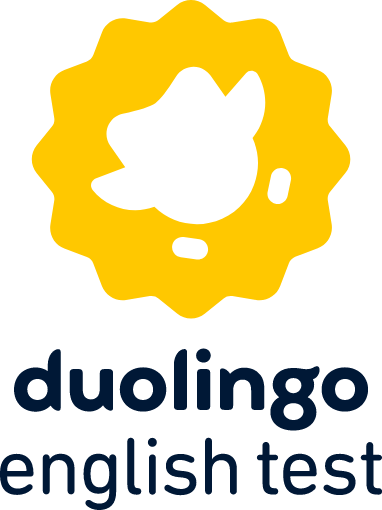
American English courses have been written for speakers of Arabic, Bengali, Chinese Mandarin, Czech, Dutch, French, German, Greek, Hindi, Hungarian, Indonesian, Italian, Japanese, Korean, Polish, Portuguese, Romanian, Russian, Spanish, Tagalog, Thai, Turkish, Ukrainian, Vietnamese.
The quality and depth of content of the courses differ depending on the language from which you are learning.
- From Spanish you can learn English to a B2 level, 4552 words across 221 topical units.
- From Mandarin Chinese the English course is aligned to the CEFR, teaches to B1 level, 2995 words in 121 units.
- From French, the course is not yet aligned to CEFR, and teaches just 1180 words in 41 units.
Duolingo is making a significant play for the educational English market, and has supplemented their English course with an English assessment that is currently accepted by more than 4600 universities from around the world, and as support for Student Visa applications to Ireland. As a completely online assessment, it gained significant traction during Covid-19 lockdowns.
Intrigued? Learn More About Duolingo Languages
If you’re eager to acquire a language, Duolingo has languages for everyone.
Intrigued? For an in-depth look at how Duolingo rekindled my attraction to the little green owl, don’t miss my product review, ‘Duolingo Review: How Did The Little Green Owl Win Back My Heart?’.
FAQ About Duolingo Languages
What languages are there on Duolingo?
It is posslbe to learn Arabic (Modern Standard), Chinese (Mandarin), Czech, Danish, Dutch, Esperanto, Finnish, French, German, Greek, Haitian Creole, Hawaiian, Hebrew, High Valyrian, Hindi, Hungarian, Indonesian, Irish, Italian, Japanese, Klingon, Korean, Latin, Navajo, Norwegian (Bokmål), Polish, Portuguese (Brazilian), Romanian, Russian, Scottish Gaelic, Spanish, Swahili, Swedish, Turkish, Ukrainian, Vietnamese, Welsh, Yiddish and Zulu on Duolingo.
What are the top 3 languages in Duolingo?
Learning from English, the top three most developed languages on Duolingo are Spanish, French and German.
In 2023, the top three courses by enrolement were English, Spanish and French.
Should I use Duolingo or Babbel?
Duolingo is expanding its course alignments with the CEFR standards, which can help learners track their proficiency levels in languages like French.
It also offers unique languages not currently available on Babbel, catering to diverse linguistic interests.
Conversely, Babbel is known for its structured approach to language learning, providing clear proficiency level mapping from the start.
Each platform has distinctive strengths, making them suitable for different types of learners based on their specific needs and learning goals.
Read my reviews for more detail on Babbel and Duolingo.
For a more complete comparison of the two apps, read our post Duolingo vs Babbel.
What rare languages are on Duolingo?
Duolingo offers the following rarely taught languages:
1. High Valyrian
2. Klingon
3. Navajo
4. Yiddish
5. Hawaiian
6. Haitian Creole
7. Zulu
How many languages does Duolingo have?
39 languages are available from English, and English is available from several other languages.
What New Duolingo Languages are On the Way?
Duolingo has not made any announcements regarding new languages for a couple of years. At this stage they seem to be consolidating the courses they have, and expanding their Schools Program.
What Duolingo Beta Languages Have Been Released?
No beta languages have been released for the past few years. Xhosa, which was in beta, appears to have been put on the back burner for now.
Cate is a language enthusiast sharing her language learning journey here. Apart from her native English (albeit 'Strine'*!), as an adult she has also learned Auslan (Australian Sign Language) to approximately a C1 level, Dutch to around B1/2, French to around A2, and has a smattering of other languages.
B.A. (Anthropology/Marketing), Grad. Dip. Arts (Linguistics), Grad. Cert. Entrepreneurship & Venture Development, (CELTA).
Auslan Interpreter (NAATI), and general Language Nut.
*For more information on 'Strine', visit https://en.wikipedia.org/wiki/Strine

